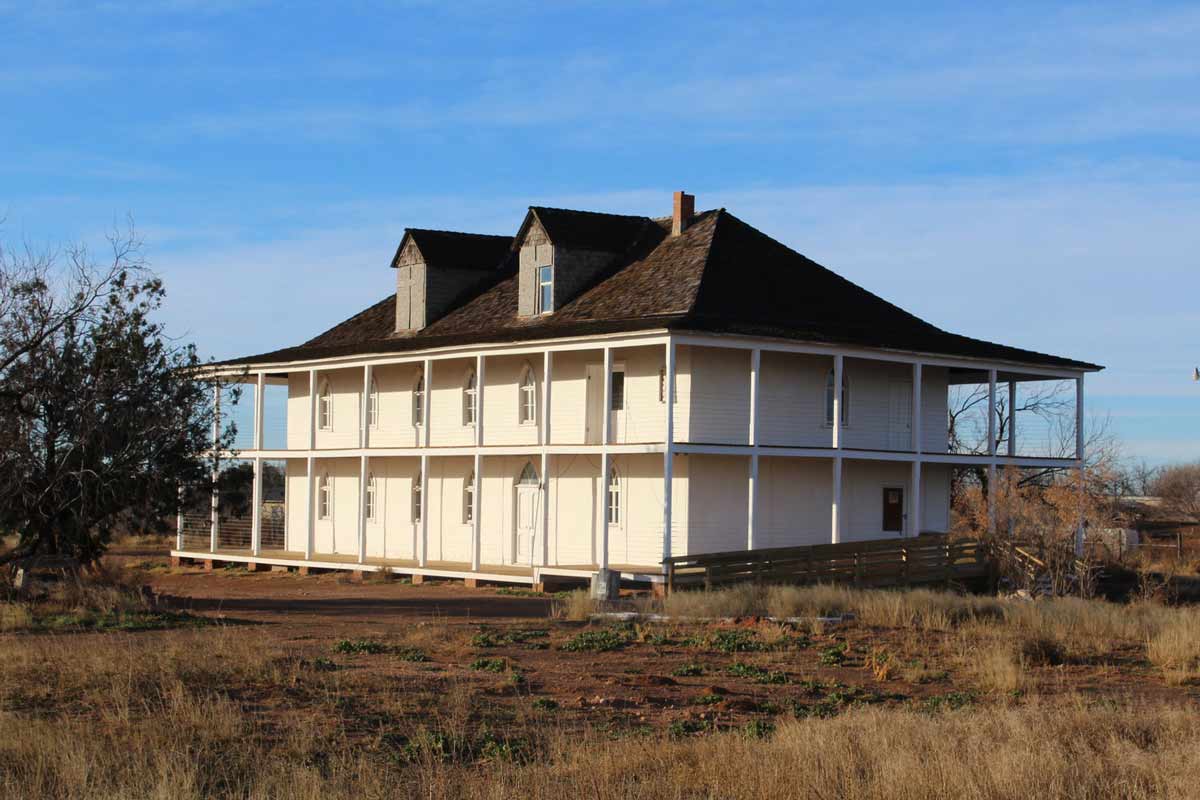The Permian Basin of West Texas is well known for its vast landscapes, magnificent sunsets, and of course, sentinel oil wells dotting the highways. Yet, with a bit more time spent in the Permian, its far-flung towns also offer up cultural gems that speak boldly of each community’s pride and history of resilience. One such treasure can be found in Stanton, Texas, home to a historic adobe convent, “The Princess of the Prairie,” and a community dedicated to its living legacy.
With earth red adobe interiors and pointed gothic windows, the convent is known to be one of the most unique historic adobe buildings in the Southwest. Its identity stands as both a Catholic church and school serving the remote region of West Texas since the 1882 founding of Marienfeld (later renamed Stanton) in Martin County. Six Carmelite friars from Scipio, Kansas, established the original campus with a church, school, nun residence, a two-story residence for postulates, and a monastery for priests. The Carmelites served students and families from across the region for well over a decade before turning over care of the site to the Sisters of Mercy in 1897. The Sisters ran the official Our Lady of Mercy Academy until 1938 when the convent and school suffered severe damage in a tornado and fell into neglect.
A Bigger Vision for the Convent
Guided by our board’s vision, Still Water Foundation partners around issues that the community itself has identified as a priority, and always works to reinforce local innovation and the vitality of rural communities. The Martin County Convent and its local champions were well aligned with this vision for change, and ready to act on it.
The convent’s board realized the need for a comprehensive plan to restore the Princess of the Prairie. In 2016, Still Water supported the organization to work with Partners for Sacred Places, a consultancy dedicated to activating historic religious sites across the United States. Partners conducted a region-wide survey to better understand locals’ perspectives on the convent’s potential, and most importantly, gage interest in supporting the site’s restoration for community use. With overwhelming enthusiasm expressed by the community, Partners and the convent’s board embarked on a strategic planning process.
Partners helped us with ideas on how to re-engage early stakeholders in the convent, attract new donors, and develop partners for local programming. We came away understanding the need for a master plan and a clear path forward.
Reggie Baker, Board President of Martin County Convent Foundation
In 2018, the convent’s board completed a Master Plan for the holistic preservation and restoration of the entire site. In addition to restoration of the 1884 adobe Carmelite monastery, the plan includes reconstruction of the original St. Joseph’s chapel, replanting of the vineyard and orchard, and construction of an outdoor plaza with pavilion, adjoining gardens, and water features. Together, the community envisioned a “living historic” gathering place for celebrations, spiritual retreats, and interpretive learning about the rich history of the region.
Early support by funders like Still Water Foundation helped our Board understand that we have a compelling story to share, and if we can demonstrate sustainability in our planning process, others will be interested in investing as well. This gave us the confidence to move forward.
Thressa Baker, Board Member of Martin County Convent Foundation
With newfound momentum, the Martin County Convent Foundation attracted the interest of several regional grant makers. It eventually presented the master plan to Stanton’s City Council with a request to use local Hotel Occupancy Taxes (HOT) for the restoration. The proposal was met with resounding approval and a generous agreement to allocate an annual portion of HOT funds over a five-year period.
A Living Legacy
Now, three years into the Master Plan, the vision for the Princess of the Prairie is coming to life. Stanton welcomes visitors from far and wide to join regular tours while the restoration continues. Last Christmas, the community lit the campus with luminarias placed along the grand promenade and candles in the convent’s windows. Following the annual Stanton Christmas parade, locals gathered at the convent for hot cocoa, stories, and countless family photos.
These things build into the fabric and culture of a city and are welcome additions to an already rich heritage here. We are really leveraging this asset so it’s not only something people enjoy seeing, but also has a high degree of utilization we can build into community life.
Reggie Baker, Board President of Martin County Convent Foundation

